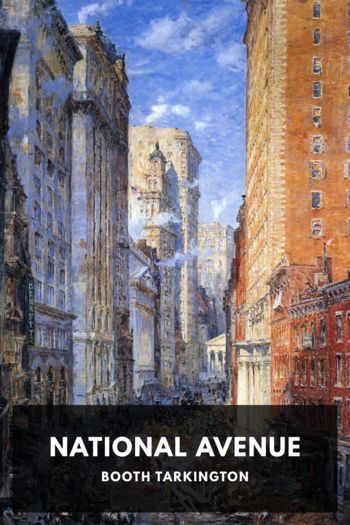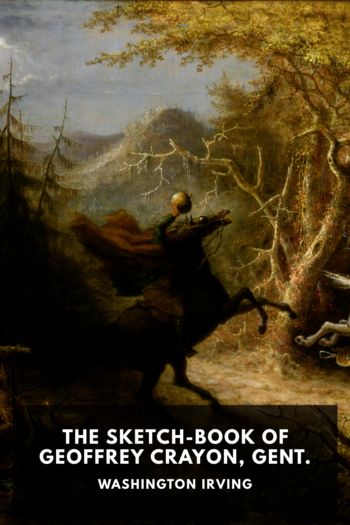Enchanted Evenings:The Broadway Musical from 'Show Boat' to Sondheim and Lloyd Webber by Block, Geoffrey (good story books to read .TXT) 📕

Read free book «Enchanted Evenings:The Broadway Musical from 'Show Boat' to Sondheim and Lloyd Webber by Block, Geoffrey (good story books to read .TXT) 📕» - read online or download for free at americanlibrarybooks.com
Read book online «Enchanted Evenings:The Broadway Musical from 'Show Boat' to Sondheim and Lloyd Webber by Block, Geoffrey (good story books to read .TXT) 📕». Author - Block, Geoffrey
The remaining twelve musicals have resurfaced in at least one popular Broadway, Off-Broadway, or other prominent New York revival from 1980 to the present (if the prestigious New City Center’s Encores! counts as a prominent performance, all fourteen shows would be accounted for).16 By 1960, New York audiences had had the opportunity to see Show Boat 1,344 times, a total that more than doubled its original run and was surpassed only by five continuously running book musicals in the top forty before 1960 (“The Forty Longest Running Musicals on Broadway 1920–1959” in the online website). The Cradle Will Rock, something of a cult musical, admittedly remains an idiosyncratic choice for a selective survey. Nevertheless, this controversial and sometimes alienating show has been revived in New York City no less than four times since its original short but historic runs in 1937 and 1938. Although these Cradle revivals may have been generated out of political sympathy, the present study will make a case for the work’s still unacknowledged and unappreciated artistic merits.
If popularity in absolute numbers is the ticket for admittance, what then are Pal Joey (1940), Lady in the Dark (1941), and Porgy and Bess (1935), three shows that were neither in the top forty nor among the top ten or fifteen musicals of their decades, doing in a survey of popular Broadway musicals? To answer this question, it might be helpful to consider a musical’s popularity by the standards of its immediate predecessors. Although it may not have enjoyed a major New York revival in more than sixty years, at 467 performances Lady in the Dark would surpass even the longest running book musical of the 1930s, Of Thee I Sing.17Pal Joey (374 performances) would rank as the fifth longest running book show of the 1930s had it premiered one year earlier.18 More significantly, in contrast to nearly every other musical comedy before Guys and Dolls, including Anything Goes and On Your Toes, revivals of Pal Joey for the most part retain the original book without fear of ridicule or loss of accessibility.
The inclusion of Porgy and Bess on popular grounds requires some spin control. Because it lost money, it is fair to judge its initial total of 124 performances as a relatively poor showing—even in a decade when two hundred performances could constitute a hit. As a musical in the commercial marketplace, Porgy and Bess failed; as an opera, arguably a more accurate taxonomic classification, it can be interpreted as a phenomenal success. No other American opera of its (or any) generation comes close.19 Of course it helps that it is also an acknowledged American classic.
In contrast to his musical comedies and operettas, Gershwin’s only Broadway opera returned a few years later in 1942, albeit more like a conventional musical with spoken dialogue replacing sung recitative—favoring accessibility over authenticity—and became a modest commercial success at 286 performances. Within seven years New York audiences thus were able to see Gershwin’s opera (or a reasonable facsimile) 410 times before the arrival of Oklahoma!, thirty performances fewer than Of Thee I Sing, the biggest hit of the 1930s and of Gershwin’s career. And in contrast to Gershwin shows that, in revival, have been transformed into barely recognizable but highly accessible and commercially successful adaptations (My One and Only [1983], Oh, Kay! [1990], and Crazy for You [1992]), revivals of Porgy and Bess, at least since the mid-1970s, often go to great lengths to restore Gershwin’s opera to prevailing notions of authenticity.
The willingness to eschew comprehensiveness leads to inevitable omissions. In addition to Jule Styne’s four top forty musicals, the most conspicuous absentees are Berlin, whose Annie Get Your Gun (ranked eighth among book shows) has for many years earned an enduring place in the core repertory (and major New York revivals in 1966 and 1999), and the team of Richard Adler and Jerry Ross, the composer-lyricists who in 1954 and 1955 produced two of the most successful book musicals before 1960, Pajama Game (tenth) and Damn Yankees (eleventh), before Ross’s premature death in 1955 at the age of twenty-nine. Some readers may lament the absence of lyricist E. Y. (“Yip”) Harburg’s collaborations with composers Harold Arlen and Burton Lane, or of composer-lyricists Harold Rome and Robert Wright and George Forrest.20
Despite these omissions, the present representative survey includes at least one musical selected from the work of those composers, lyricists, and librettists responsible for many of the top forty musicals shown in the online website (“The Forty Longest … 1920–1959”). The most popular creators of each decade are also well represented. In the 1920s, six of the eleven longest runs had either a score by Kern or lyrics or a libretto by Hammerstein. In the 1930s, only two book musicals of the twelve longest runs did not feature a score by Rodgers and Hart, Kern, Porter, or the Gershwins (who provided four, three, two, and one, respectively), and one of these consisted of recycled music by Johann Strauss Jr. By the 1940s and ’50s, Rodgers, now teamed with Hammerstein, dominated the musical marketplace with no less than five of the ten longest runs of those years.21
Coda
In The American Musical Theater noted Broadway conductor and educator Lehman Engel offered the following list of fifteen Broadway “models of excellence” that “represent that theater in its most complete and mature state”: Pal Joey; Oklahoma!; Carousel; Annie Get Your Gun; Brigadoon; Kiss Me, Kate; South Pacific; Guys and Dolls; The King and I; My Fair Lady; West Side Story; Gypsy; Fiddler on the Roof; Company; and A Little Night Music.22 The first twelve of Engel’s list fall within the central focus period of this study (acts I and II), and six of these will be





Comments (0)